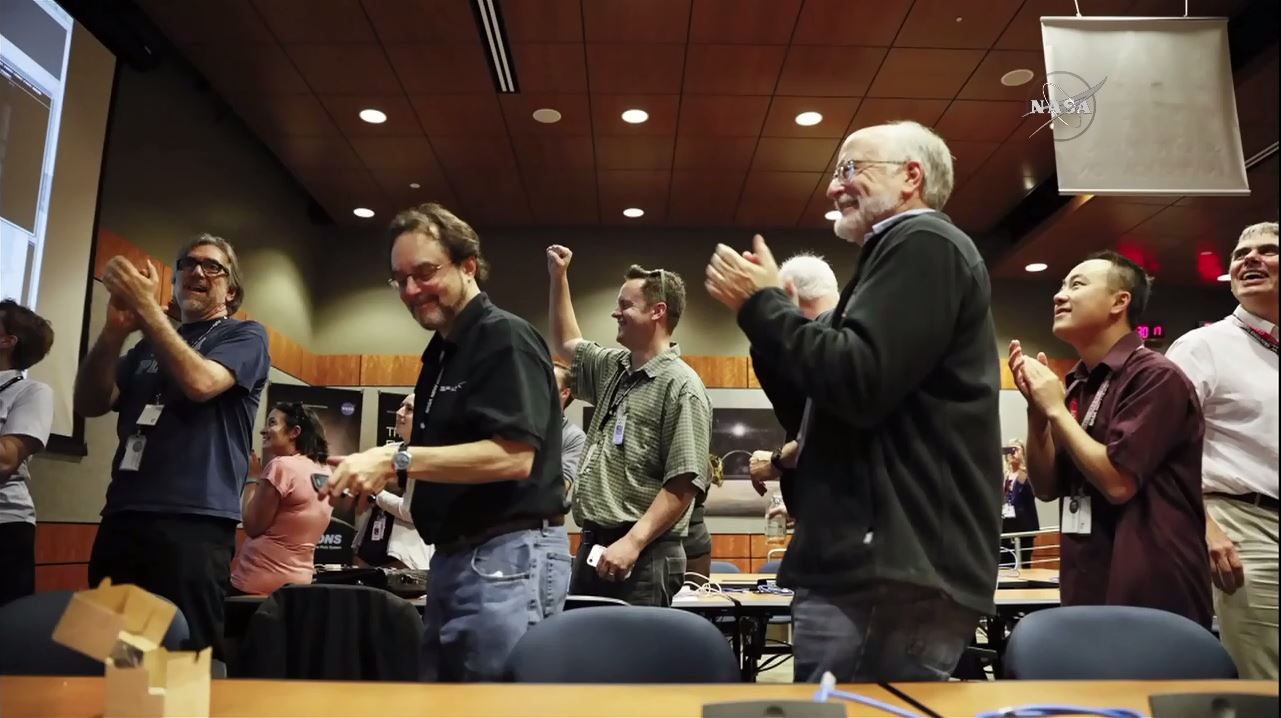Pluto Flyby Begins: NASA Probe Enters Encounter Phase

NASA's New Horizons probe has officially begun to execute its sequence of Pluto flyby observations as it zooms toward its closest approach to the dwarf planet on July 14.
Mission representatives say New Horizons is "back on track" after it experienced an anomaly on July 4 that caused it to go into a temporary "safe mode." The anomaly was later shown to be the result of too many commands being executed at once.
The spacecraft is already collecting data about the Pluto system, and its nine-day flyby sequence will continue through July 16. It's taken more than nine years for the $700 million New Horizons mission to traverse the 3 billion miles (4.8 billion kilometers) between Earth and Pluto, but the peak of the spacecraft's journey will last a matter of hours. [Photos of Pluto and Its Moons]
As the probe nears Pluto, NASA TV will air daily updates from mission control at the Johns Hopkins University Applied Physics Laboratory in Laurel, Maryland, at 11:30 a.m. ET (1530 GMT), through July 14.
In an update Wednesday (July 8), Alice Bowman, mission operations manager for New Horizons, said the July 4 anomaly gave the mission team a bit of a scare.
"We were all a little bit afraid of what might happen, but we put on our engineering hats and we went down our checklist and we did what needed to be done to recover that spacecraft to operational mode," Bowman said.
New Horizons returned to nominal science operations on Tuesday (July 7). Mission team members reported that about 30 observations were lost during those three days. Those data represent "less than 1 percent of the total science that the New Horizons team hoped to collect between July 4 and July 16," NASA said in a statement.
Get the Space.com Newsletter
Breaking space news, the latest updates on rocket launches, skywatching events and more!
"We're delighted with the New Horizons response to the anomaly," Jim Green, NASA's director of planetary science, said in the statement. "Now we're eager to get back to the science and prepare for the payoff that's yet to come."
Bowman said the spacecraft is currently taking science data as well as optical navigation data, which is "very important because it is a measure of how well we are doing on that trajectory to hit that specific point at the specific time that the science team wants us to hit. So that's pretty much what we're focused on now, is to get those science observations at the right time and at the perfect lighting conditions.
"We're amazingly close," Bowman said. "It's hard to believe that we're here right now."
Follow Calla Cofield @callacofield.Follow us @Spacedotcom, Facebook and Google+. Original article on Space.com.
Join our Space Forums to keep talking space on the latest missions, night sky and more! And if you have a news tip, correction or comment, let us know at: community@space.com.

Calla Cofield joined Space.com's crew in October 2014. She enjoys writing about black holes, exploding stars, ripples in space-time, science in comic books, and all the mysteries of the cosmos. Prior to joining Space.com Calla worked as a freelance writer, with her work appearing in APS News, Symmetry magazine, Scientific American, Nature News, Physics World, and others. From 2010 to 2014 she was a producer for The Physics Central Podcast. Previously, Calla worked at the American Museum of Natural History in New York City (hands down the best office building ever) and SLAC National Accelerator Laboratory in California. Calla studied physics at the University of Massachusetts, Amherst and is originally from Sandy, Utah. In 2018, Calla left Space.com to join NASA's Jet Propulsion Laboratory media team where she oversees astronomy, physics, exoplanets and the Cold Atom Lab mission. She has been underground at three of the largest particle accelerators in the world and would really like to know what the heck dark matter is. Contact Calla via: E-Mail – Twitter









